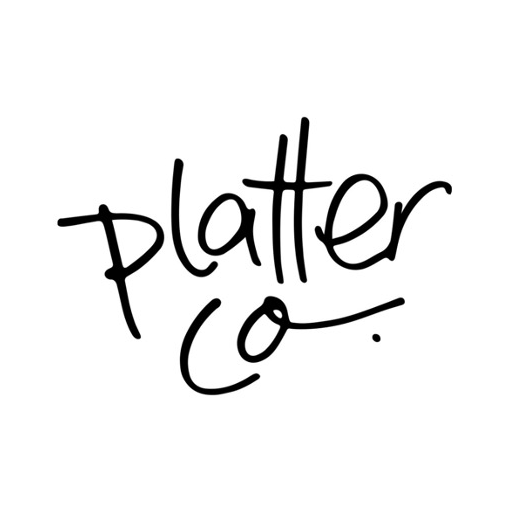A grazing table is a wonderful way to cater for a few reasons. First, it allows guests to graze and sample a variety of different foods, rather than being limited to a set menu. This can be particularly appealing for guests with dietary restrictions or preferences, as they can easily pick and choose the foods that best suit their needs. Additionally, grazing tables feature a variety of visually appealing and popular foods, which can add to the overall ambiance and aesthetic of any event. Grazing tables can be set up in a variety of ways, on a large table, a group of grazing boards or individual boxes, they’re flexible, straightforward to set up, can be styled to suit the occasion, are easy to serve and can be enjoyed standing or sitting.
Here are a few ideas to create the perfect grazing table:
- Separate, together
Graze boxes and other graze vessels have become super popular in recent times. While a grazing table may have the biggest visual impact, when it's not the best option, it doesn't mean you can't still have fun with how the food is served. We all eat with our eyes first, right? Bamboo boats or bamboo cones are a really fun way to present individual grazes and are practical in keeping things separate, while still serving up all those platter goodies. When presented using other props, these individual portions can still have a big visual impact at your event.
- When it comes to inclusions, prioritise quality over quantity
Cheese is cheese is cheese, right? Nope. When it comes to cheese, cured meats and pretty much every other inclusion for your grazing table or grazing box, do your research (but also, get curious!) Head to your local market, deli or grocer and ask for recommendations. We love local and will always try and support other small business when it comes to sourcing our products - and we're always up for trying a new cheese or pairing depending on the event, theme, season etc.
- Building blocks
Ok, so you have a pile of food. What do you place first?! For grazing tables, before you place any food, line the space with some food-safe paper. Depending on the style of table and how you'd like to present each inclusion, next, place serving ware throughout the space. We love to use a mix of antique silverware, slate tiles and timber for our tables. It builds height, adds layers and points of interest throughout. Flat grazes can also work really well though, props are not a necessity. Next, we'd lay some fresh foliage, usually blue gum or similar. Once you've got the framework down, we then start adding each element. Position dry goods first, think breads, crackers, pretzels, nuts etc. The aim is to cover the entire space, so shoot the gaps! While every graze we create is unique, there is some method to the madness! Same deal for graze boxes, position bigger, bulkier inclusions first, for boxes you can place the cheese straight away, whereas for tables (they can take up to an hour to set), we'd usually just leave space for any temperature sensitive items and place those just before the platter is ready to be demolished/enjoyed!
- Consider placement & pairings
Thoughtful placement of each inclusion and accompaniment is très important. We love filling our tables with foods people love (all killer here, no filler), but we also like to encourage people to try something new - and that's where food placement comes in. Say, blue cheese and dried fruit. It's one of our favourite ways to enjoy some savoury and sweet - so we'd usually place those products in close proximity to each other on a table or in a grazing box. To take things a step further, think about what people might be drinking as they're enjoying the platter too. For gin drinkers for example, the classic G&T would pair nicely with a mild & creamy brie or even some Meredith Dairy goat's cheese.
- Colour forever, beige never
Cheese, crackers, breads, nuts ... a graze can look pretty beige. We'll always finish things with a splash of colour, whether it's fresh fruits, dehydrated fruits or edible flowers, adding colour will really lift the graze, adding vibrance and depth.
Have fun and enjoy!
Take the time to consider the occasion and how you want to set up the Grazing Platter. You could use boards or other props with a variety of different cheeses, crackers, and breads.
Add some charcuterie options, such as prosciutto, salami, and mortadella.
Include a selection of fresh fruits and berries, such as grapes, strawberries, and blueberries.
Offer a variety of dips, such as hummus, baba ghanoush, and tzatziki.
Include some pickled vegetables, such as cucumbers, olives, and peppers.
Add some sweet treats, such as chocolate pieces, macarons, or mini cupcakes.
Serve with different kinds of bread like baguette, sourdough, and crackers.
Include some nuts and dried fruits for a crunchy texture.
Offer a variety of spreads like honeycomb, quince paste or pate.
Add some fresh herbs or flowers for garnish and a touch of colour.
Remember to keep in mind dietary restrictions and preferences of your guests. If need be, separate boards can be made gluten free, dairy free, nut free etc.
Overall, grazing platters are a great way to cater for events because they offer a wide variety of options, are customizable, and are a cost-effective and visually appealing way to feed a large number of guests.
Peace! - Stacey
